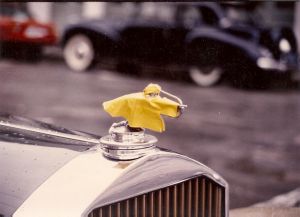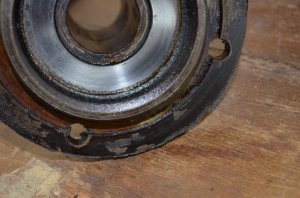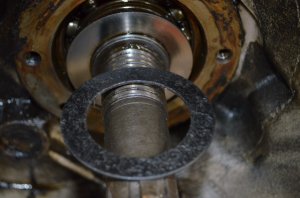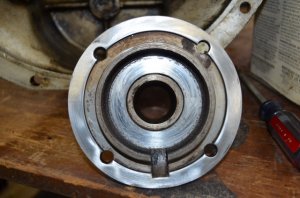- Home
- About Us
- Join/Renew
- Member Benefits
- Member Pages
- Log In
- Help
- Museum Store
I’m going to miss the meet, too…hope y’all have a great time, but know you will!
I used a Narragansett wiring harness set on my 1937 Cord, excellent quality and fit.
I ordered on phone while looking at website, and when it came the invoice was well over the prices listed on the website. I settled with them, but make sure if you use these guys to ask about price updates.
Very nice presentation by Chris, and as mentioned what a great resource, so glad that Bernie and the Society kept this together and in a place where it will be saved and used……bravo!
I have some files of correspondence between Pierce and a local (Buffalo) machine shop, discussing tools and parts to be made, or made, this would be a good home for those files also, after my estate sale!
I would urge anyone with out of the ordinary Pierce literature to consider this option also….
Nice! There’s almost a car there…..
Here is the fabric picture that I thought was going to post in the previous post….
Attached is a picture when I was trying to match original Pantasote material….what you see on the right side of the photograph is original Pantasote. This material was made by laying a water resistant coating on fabric. The random pattern you see is partly the fabric showing through, partly the uneven coating, and partly age, although the top material of that particular top was very well preserved. If Eric can duplicate the look of that material, I would be very interested, as it’s correct for so many early tops and top inserts. I worked with Eric to make a replicated Pantasote with a whipcord backing, but his guys were still not able to really get the true look of the original. He took some grained top material, and “melted” and restamped the surface with a smoother pattern; a happy circumstance was that in the right light some of the original grain could be seen, which was similar to the fabric grain you’d see on original material. The second picture shows the two early tops I did with this material.
Eric is a great resource for us early car guys, he helped me tremendously getting a period correct fabric for some very early tops, even to the point where he “restamped” the surface on 40 yards of special material. A lot of the discussion was about Pantasote, which was widely used in the teens and twenties. To my knowledge and research, there is no exact current match to that original material, what is called “replicated Pantasote” is basically a vinyl material. By the 1930’s, vinyl was in use (it was “invented” in the 1920’s), so a light grain vinyl top would not be out of place.
On a side note, the insert top was wood slats, chicken wire, padding, and top….on the 1935 coupe which I owned a while back, the chicken wire was the antenna for the radio, isolated from the top metal and only touching the wood…..
I believe the 1932 that Steve mentions was the one restored by B.B. Crump of Baton Rouge. It lived on the Gulf coast in Mississippi for a while, I had a chance to buy it, but not enough resources at the time to restore it. I never liked the bracket headlights, it seems to steal the soul of the Pierce, the distinctive fender headlights make the rest of the styling come alive in some manner….
That’s a handsome car in beautiful shape, let us know when you get it home!!
It was Lionel Stone, but I understand now that he had a serious truck accident about 5 years ago, so don’t think that source is available. At one time he cast some bronze oil pump housings for the Studebaker Presidents, and with a little bit of work they could be made to fit a Pierce application.
Bob, I have a box of old Pierce oil pumps somewhere, if you can’t find a source we can dig through it and see if anything is usable….
There are a LOT of different types of stainless, it’s not just one alloy…..and I think that might be the issue…I know this from years in the food processing business, when different alloys can really get one in trouble…..304, 316, 304L (low carbon), and so forth.. stainless is actually a soft metal, but it work hardens quickly on the surface, so anyone cutting stainless with a short tooth saw thinks “wow, hard”, when actually you need to cut UNDER the work hardened surface…so a shaft that’s not prepared correctly, or from the correct alloy, for a water pump won’t corrode, but it may wear quickly…
No, Harrah just owned it, it was apparently built in the 1930’s, a custom car…
This is the Kouri speedster that was, at one time, part of the Bill Harrah collection. While a very well done custom car, I think it’s what is known as a “Bita” car… a little bita that car, and a little bita that other car…but not a true Pierce for sure…as I posted on the AACA forum about the same car, don’t know what the background of the car has to do with paint…it’s not an original factory paint job to start with, and even when I saw the car in the early 80’s at Harrahs, it was a repaint…interesting car, and you family has a very interesting collection based on what can be seen in the background of the photos…good luck with car, looks like great fun…
Hey, gotta try to keep him dry!!!

My ’31 Model 43 has an interior copied exactly from an original, though it’s a phaeton the driver’s door is the same…I can send you a sketch and pictures….
Thanks for posting this, Peter….. I bought the drawing. The thing that really sold me on it is that it shows the design for the stair railing inserts, with the arrow.
I know there was such railing in the factory, if anyone has a section that came from there for sale let me know!! I don’t know if any are out there in private hands…….
third picture

second picture

I’ve reduced picture sizes and will try to post…..

I love the topic of greasing leaf springs (although I realize that wasn’t the original question), it brings out so many opinions.
If the contact surfaces between each leaf were perfectly frictionless, then the car better have darn good shock absorbers. One function of leaf springs is to dampen movement, and the amount of damping is directly related to friction between each leaf. Of course, springs can’t be rusted together either, or there’s no inter-leaf movement and thus no “spring”.
My personal opinion is that most cars have the best ride when leaf springs are cleaned/smoothed separated (bead or sandblasted), painted with an epoxy primer, and assembled dry. There are many who believe the opposite, that there should be oodles of grease between each leaf……and I’m not sure there’s a right or wrong answer…..
